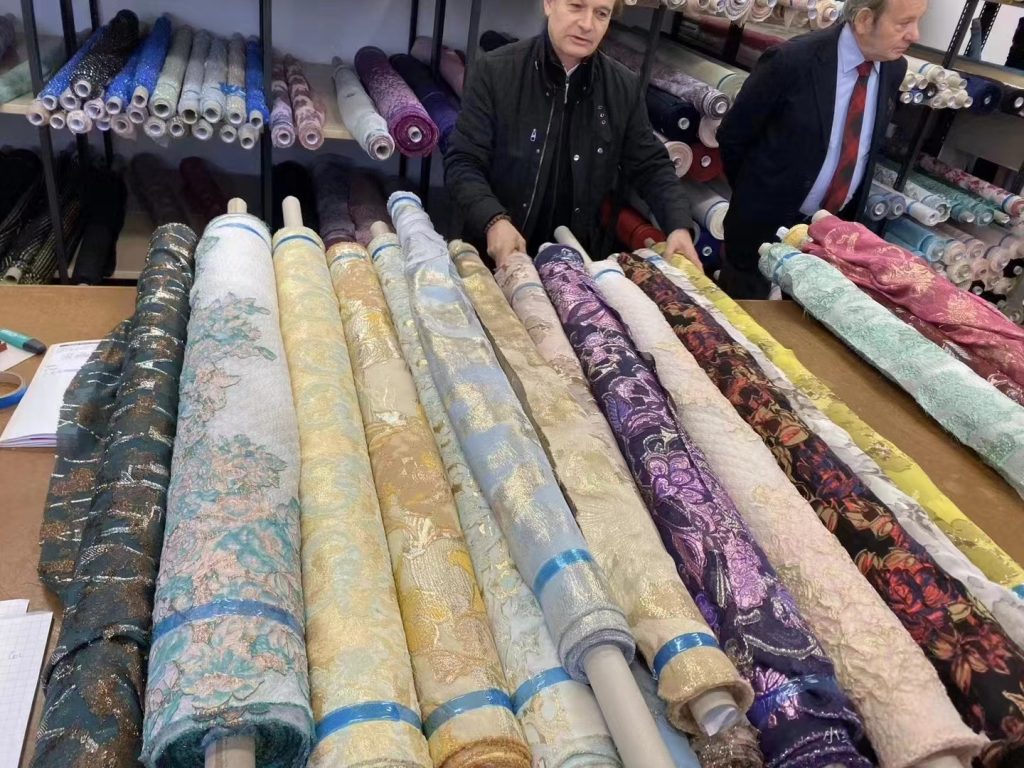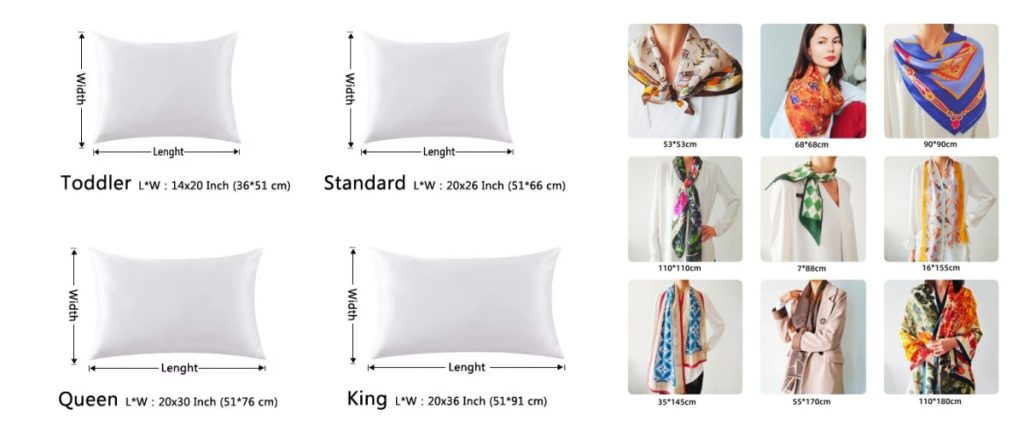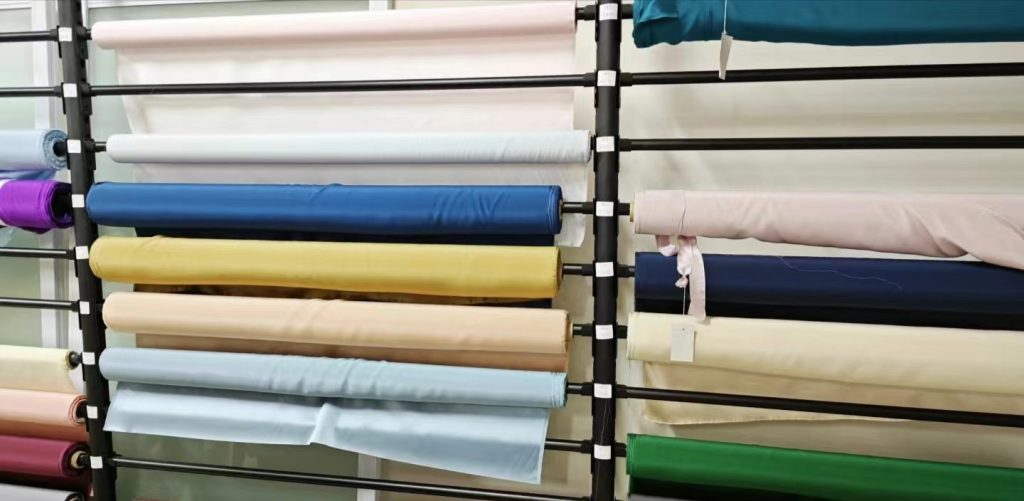生地サイズによる仕様、コスト、MOQの影響:実践的分析
著者ソフィー・チェン
日付:2024年12月29日
多くの産業、特に繊維の生産とカスタマイズの分野では、我々はしばしば、「繊維の生産とカスタマイズ」という要件に遭遇する。 最小注文数量 (MOQ)。この要件は、しばしば発注時に顧客からの質問につながる:なぜ、製品によっては最低注文数量が必要なのですか?なぜサプライヤーはいつも、1色で20枚、10色で20枚ずつ生産するのは不可能だと言うのでしょうか?これに対処するため、私は以下のタイトルの連載記事を書いた。 なぜカスタマイズされたパートナーシップは最小注文数量を持つのか:複数の影響要因の分析.
この記事では、生地のサイズが製品の仕様、コスト、MOQにどのような影響を与えるかを探り、市場に出回っている一般的な生地のサイズを紹介し、起業家やデザイナーにいくつかのアドバイスを与える。
以下のサイトをご覧ください。 小ロットのカスタマイズ をご覧ください。
生地幅 VS 仕様とコスト
工業印刷や大規模生産では、生地の幅が規範とコストを決定する重要な要素になることが多い。例えば、大判印刷やレイアウトを行う場合、メーカーは布幅に基づいて生産工程をアレンジする必要がある。通常、全幅の布地レイアウトを完成させるには、装置のレイアウト能力をフルに活用するために、完成品を数点生産する必要がある。少量しか注文がない場合、生地の無駄が大きくなる可能性がある。
例えば、60cm×60cmのピースの製造を依頼する顧客もいるが、そのような小さな寸法はファブリックロールの幅とうまく合わないことがある。その結果、未使用の生地が大量に発生する可能性がある。生産量が少ないと、生地の使用量を効率的に最適化することが難しくなり、無駄が生じたり、材料費が高くなったりする。
このような場合、メーカーはしばしば、過剰な材料と注文数量が少ないことによる非効率をカバーするために価格設定を調整しなければならない。
従って、工業的な用途やコストの観点から、特に主要取扱品目に基づいて生地を仕入れているサプライヤーについては、顧客がサプライヤーから提示される生地幅について一定の理解を持つ必要がある。桑絹織物にこだわる場合、最も一般的に使用されている生地幅は114cmと140cmである。ポリエステル繊維の場合、最も一般的な生地幅は140cmから150cmであり、純綿の場合、一般的な生地幅も140cmから150cmである。ファッション・テキスタイルとは別の製品カテゴリーであるホーム・テキスタイル製品の場合、生地幅は260cmに達することもある。

また、枕カバーの一般的なサイズは50 cm x 60 cm、50 cm x 70 cm、50 cm x 91 cmですが、桑シルクのスカーフのサイズは53 cm x 53 cm、65 cm x 65 cm、90 cm x 90 cm、135 cm x 135 cmがほとんどです。一方、デュベカバーは生地幅が250cmまであり、デュベカバーは通常、最小注文数量(MOQ)が大きくなります。

桑シルクのスカーフを145cm x 145cmのようなサイズで要求されることが多いお客様は、その要求が、織物工場がお客様のために幅150cmの生地を特別に生産する必要があることを意味することを十分に理解していないかもしれません。これはまた、最小注文数量(MOQ)が2,000枚以下ではありえないことを意味します。
120cm×120cmのようなサイズの桑シルクのスカーフをお求めになる他のお客様も、そのご要望が、裁断される長さごとに20cmの桑シルクの生地の無駄を生むことを十分に理解されていないかもしれません。この無駄はコストに織り込まれます。桑シルク生地の原材料費が1メートルあたり約$10-20(1インチあたり$0.25-0.51)であることを考えると、これは本質的に材料の完全な無駄です。

生地長さ VS MOQ & コスト
生地の長さは通常MOQとコストに影響します。例えば、桑シルクの生地1ロールの長さは通常50メートルで、公差はプラスマイナス2メートルですが、水着の生地は1ロール150ヤードから200ヤードの場合があります。生地の正確な長さは、サプライヤーに確認する必要があります。では、最小発注量(MOQ)は何で決まるのでしょうか?通常、生地1ロールの長さに基づいています。つまり、MOQは生地1ロール全体を使い切るように設計されているのです。これにより、卸売価格でMOQを入手することができます。
顧客の中には、"もう少し生地を少なくできないのか?"と尋ねる人もいるかもしれない。現実には、使用する生地が1反に満たない場合、川上のサプライチェーンから発生する生地コストは卸売価格から小売価格にシフトする。その結果、最終的な価格は卸売価格ではなく、生地の小売価格に基づいて計算されることになる。
したがって、起業家やデザイナーがビジネスを始める場合、テキスタイルのデザイン寸法は、まず市場で一般的に使用されている標準的な生地サイズを尊重する必要がある。ビジネスが成長し、売上が増加するにつれて、カスタマイズされた生地サイズを要求することができる。
カスタムメイドの協力が必要な場合、良いサプライヤーは貴社の製品を理解し、生地の特性について詳しい知識を持っていなければなりません。また、価格と最小発注量(MOQ)の最適なバランスを見つけることができるはずです。
筆者の経験によると、デジタル印刷のシルクスカーフの場合、通常、1デザインにつき50枚が品質と数量のバランスが取れた最低注文数量である。枕カバーの場合、カスタマイズされた竹繊維の枕カバーは一般的に1色につき100枚以下にはできませんが、カスタマイズされたポリエステル繊維の枕カバーは1色につき50枚から作ることができます。ただし、在庫がある場合に限ります。特別な色や他の技術が必要な場合は、MOQは大幅に増加します。
結論
この記事では、生地寸法が製品仕様、MOQ、コストに与える影響について説明する。実際には、生地の収縮率、製品の職人技、製品デザイン、生産工程といった他の要因も、これら3つの側面に影響を与える。これらの要素については、今後の記事で詳しく紹介する予定である。
生地、職人技、製造工程について詳しくお知りになりたい場合、またはさらなる協力が必要な場合は、電子メールアドレスでお問い合わせください。 vip@docsunhomeandliving.comまたは下の画像をクリックして公式ウェブサイトをご覧ください。また ドクサン シルク 毎日の服装指導のために。

